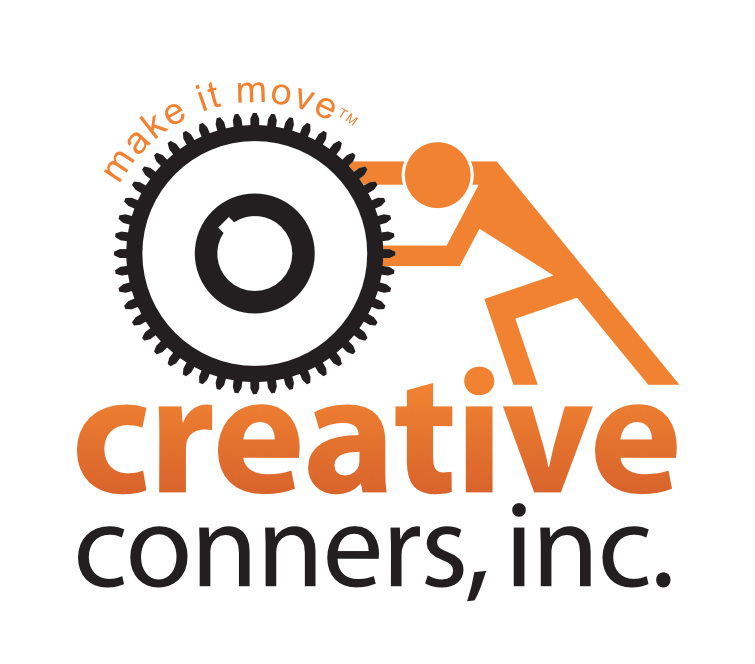 A common question we get here at Creative Conners is how to build a multi-step cue. We will look at two possible scenarios and explain how to achieve the effect using Spikemark. The first scenario: A turntable rotates slowly at one speed and then at a certain point, without stopping, the speed changes and the turntable continues at the new speed until the cue ends. This is actually pretty simple to pull off. The trick is to write two cues that overlap, and when the second cue starts, it will smoothly take control of the turntable. Let’s take it step by step. Cue #1 rotates the turntable at 1 revolution per minute with a target of 720 degrees. The second cue rotates the turntable at 2 revolutions per minute and also has a target of 720 degrees. Cue #2 is linked to Cue #1 with a position trigger, so that when the turntable hits 360 degrees Cue #2 will start. When cue #1 runs, as soon as the turntable hits 360 degrees cue #2 takes over, speeds up the revolve, and completes the cue. Cue #1 never completes since it is superseded by cue #2, but that’s OK, Spikemark simply moves on to the next cue. Our second scenario: A wagon tracks upstage towards a wall and when it gets near the wall, the wall bi-parts, allowing the wagon to travel through. The problem with this scenario is that you don’t want the wagon to crash into the wall panels, and you don’t want the walls to open until absolutely necessary so that the movement looks slick. The solution here is three cues. Cue #1 has a target that stops the wagon before it gets to the wall (in case the wall does not open). Cue #2 opens the wall, and can be driven with a position link to of cue #1. Cue #3 moves the wagon through the wall and can be triggered with a position link that references the wall opening once the gap is wide enough for the wagon to get through. The trick is that cue #3 is triggered from cue #2 before cue #1 finishes, so it looks like the wagon has one fluid motion towards it’s upstage target. If something goes wrong, and the walls don’t open, the trigger point for cue #3 is never reached and cue #1 stops the wagon short of a collision. Pretty neat, right? By the way, multi-speed cueing is explained in the Spikemark manual on Page 103. That chapter has a lot of info about complex cue creation and I urge everyone to check it out.
A common question we get here at Creative Conners is how to build a multi-step cue. We will look at two possible scenarios and explain how to achieve the effect using Spikemark. The first scenario: A turntable rotates slowly at one speed and then at a certain point, without stopping, the speed changes and the turntable continues at the new speed until the cue ends. This is actually pretty simple to pull off. The trick is to write two cues that overlap, and when the second cue starts, it will smoothly take control of the turntable. Let’s take it step by step. Cue #1 rotates the turntable at 1 revolution per minute with a target of 720 degrees. The second cue rotates the turntable at 2 revolutions per minute and also has a target of 720 degrees. Cue #2 is linked to Cue #1 with a position trigger, so that when the turntable hits 360 degrees Cue #2 will start. When cue #1 runs, as soon as the turntable hits 360 degrees cue #2 takes over, speeds up the revolve, and completes the cue. Cue #1 never completes since it is superseded by cue #2, but that’s OK, Spikemark simply moves on to the next cue. Our second scenario: A wagon tracks upstage towards a wall and when it gets near the wall, the wall bi-parts, allowing the wagon to travel through. The problem with this scenario is that you don’t want the wagon to crash into the wall panels, and you don’t want the walls to open until absolutely necessary so that the movement looks slick. The solution here is three cues. Cue #1 has a target that stops the wagon before it gets to the wall (in case the wall does not open). Cue #2 opens the wall, and can be driven with a position link to of cue #1. Cue #3 moves the wagon through the wall and can be triggered with a position link that references the wall opening once the gap is wide enough for the wagon to get through. The trick is that cue #3 is triggered from cue #2 before cue #1 finishes, so it looks like the wagon has one fluid motion towards it’s upstage target. If something goes wrong, and the walls don’t open, the trigger point for cue #3 is never reached and cue #1 stops the wagon short of a collision. Pretty neat, right? By the way, multi-speed cueing is explained in the Spikemark manual on Page 103. That chapter has a lot of info about complex cue creation and I urge everyone to check it out.
0
